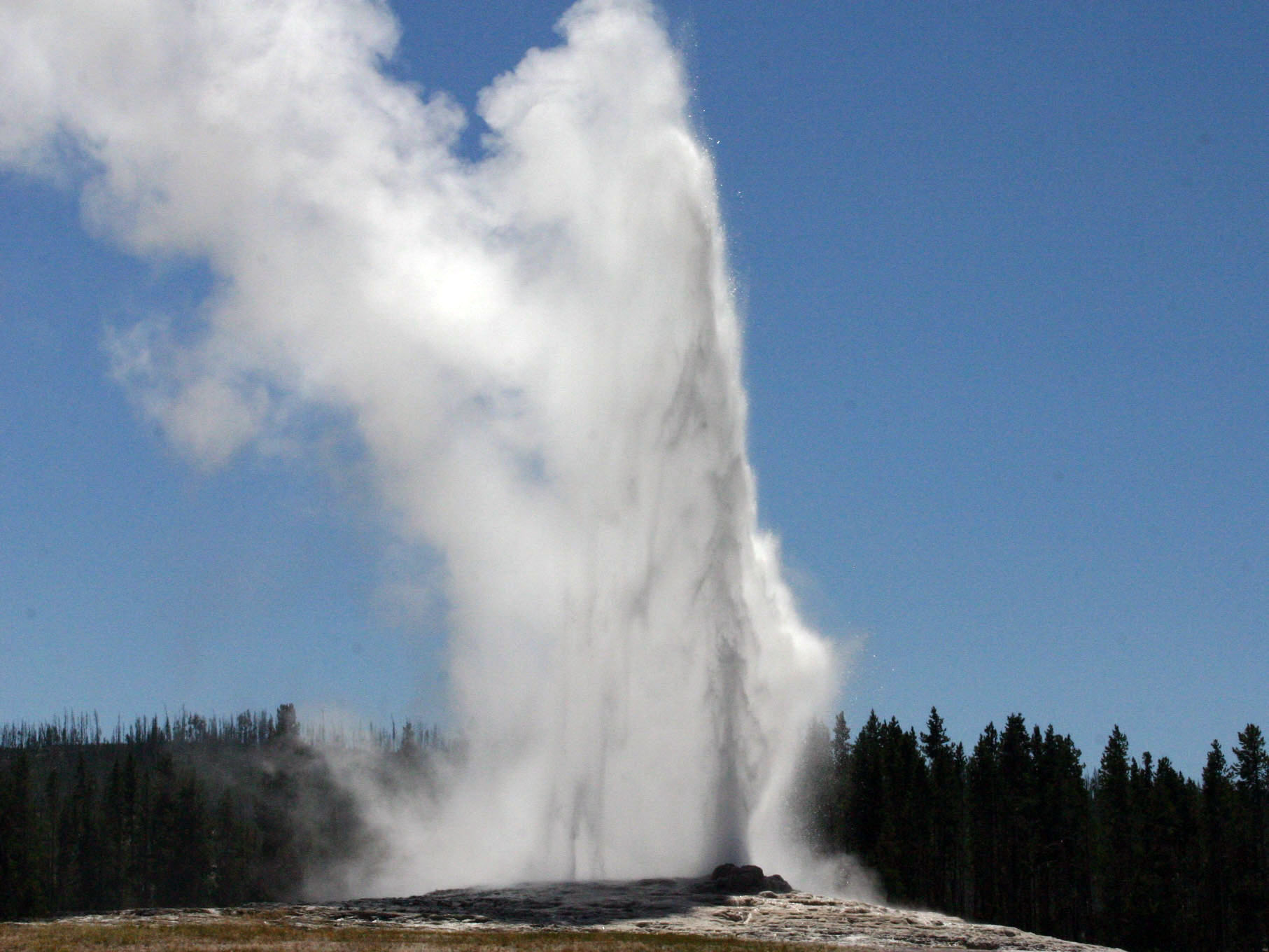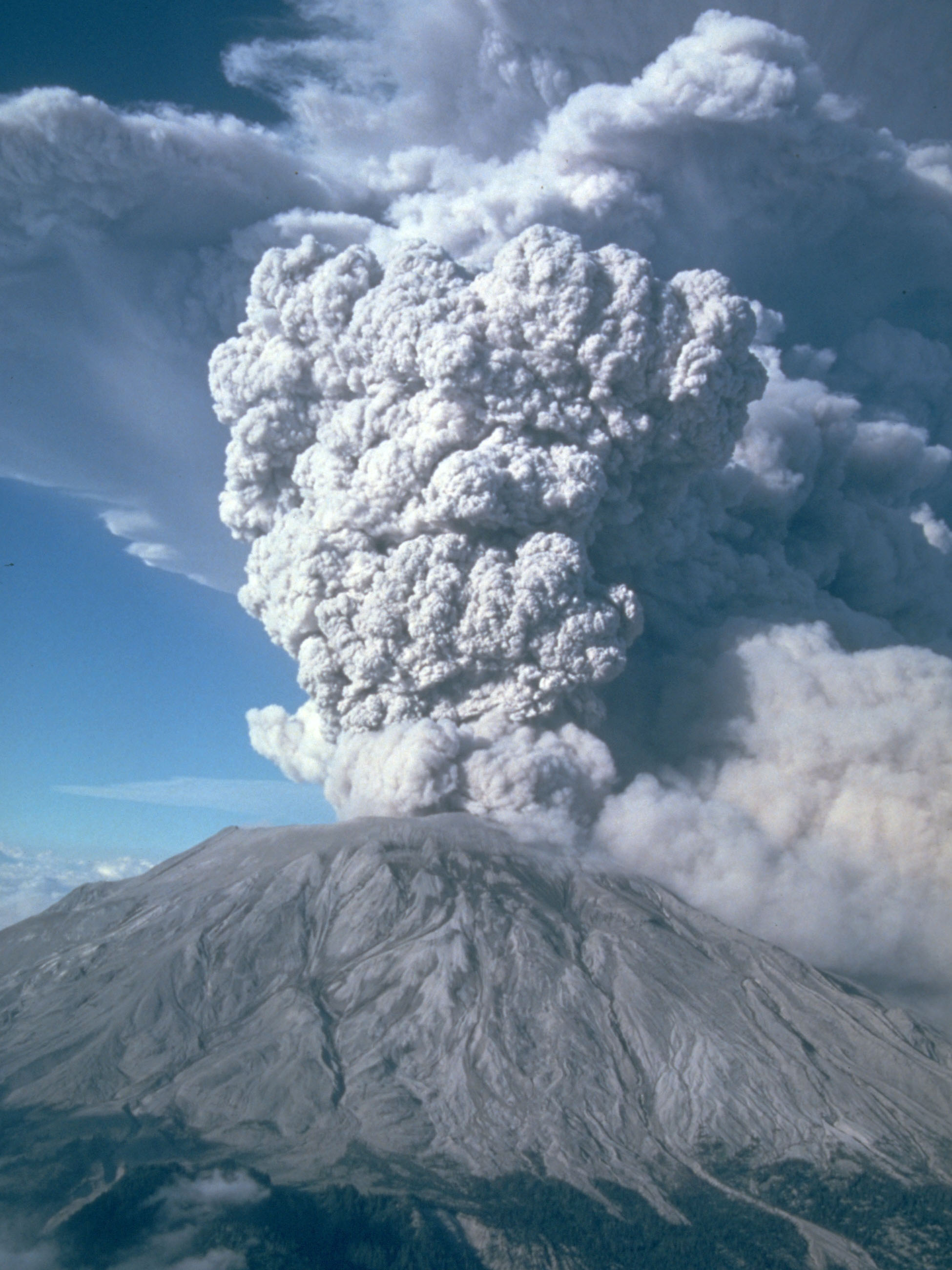2.6 Bubble Nucleation
Rates of nucleation of the products of many chemical reactions important for igneous and metamorphic rocks are difficult to observe and are not well known. However, cases of rapid nucleation of gas bubbles in hydrothermal fluids or in volcanic magmas are known to produce dramatic, memorable effects. For example, geysers spray hot water into the air, in some cases to impressive heights (10's of meters), due to the buoyant force of steam bubbles. To produce a geyser eruption, steam bubbles nucleate and grow in groundwater chambers heated by hot rocks remaining from volcanic eruptions. Because steam bubbles occupy more volume than the water they replace, their growth and rise reduces the density of the groundwater-steam mixture and pushes out some of the hot water above the source chamber. These processes lead to a decrease in the hydrostatic pressure on the groundwater chamber, causing more bubbles to form. The additional bubbles repeat the process in an accellerating chain reaction, producing enough steam bubbles to cause the geyser to erupt. See Figure 2.08.
Bubble nucleation and growth is inhibited by surface/interfacial energy when the bubbles are small. This effect can be overcome by the presence of rough surfaces that offer a lower interfacial energy for bubbles. You may be familiar with boiling chips, which are used in chemistry labs to facilitate vapor bubble nucleation when boiling liquids, preventing superheating and making the process safer. A popular demonstration of the effect of rough surfaces on vapor bubble nucleation involves dropping Mentos mints into a freshly opened bottle of soda. The rough surface of the Mentos mints provides many, very good nucleation sites for CO2 bubbles to form from CO2 dissolved in the soda. Rapid exolution of the CO2 produces many bubbles and leads to a geyser-like eruption of the soda+bubble mixture from the bottle. You can see a good demonstration of a Diet Coke eruption due to rapid CO2 bubble nucleation here: ACS Mentos Demonstration.
Vapor bubbles are important drivers of many volcanic eruptions (for example, see Figure 2.09). To do so, vapor bubbles must nucleate and grow in magma where viscosity is high and atom movement more difficult than in a geyser. The nucleation and growth of vapor bubbles in volcanic systems is an area of active research with many unanswered questions. How important are phenocrysts as sites of vapor bubble nucleation (heterogeneous nucleation)? Do some mineral phenocrysts offer better nucleation sites than others? How is bubble nucleation affected by the SiO2 composition of the magma, which strongly affects magma viscosity? You can read attempts to answer these and other questions about nucleation kinetics in papers on this list.

